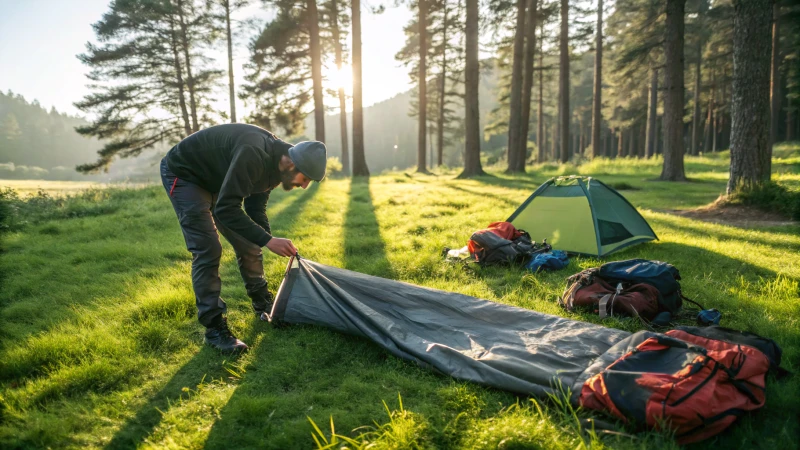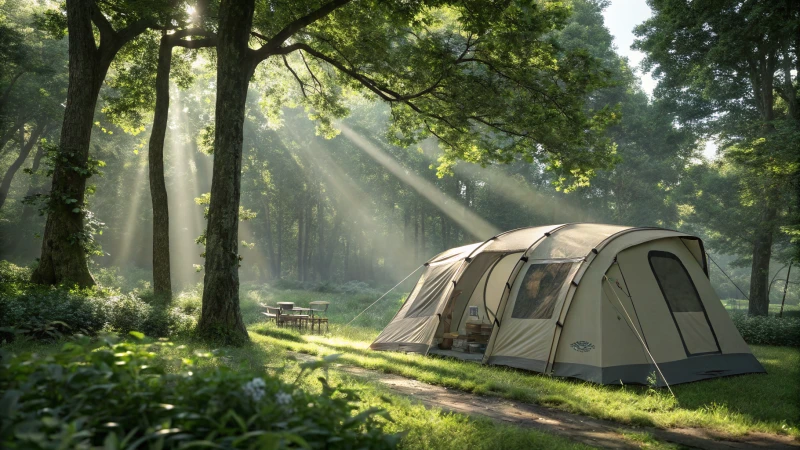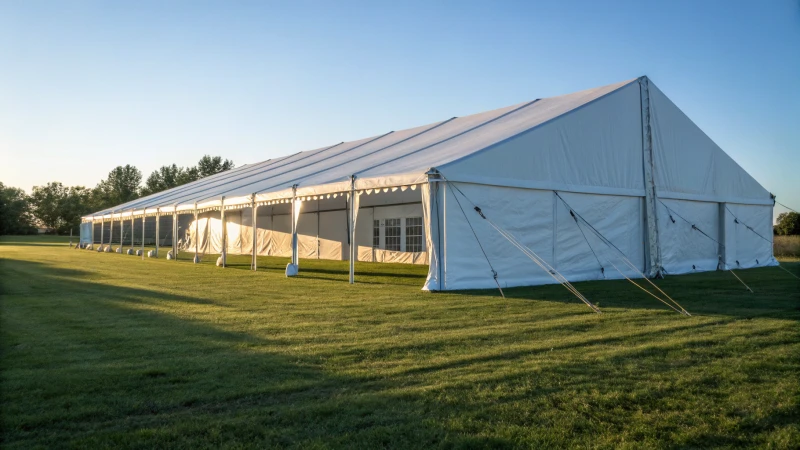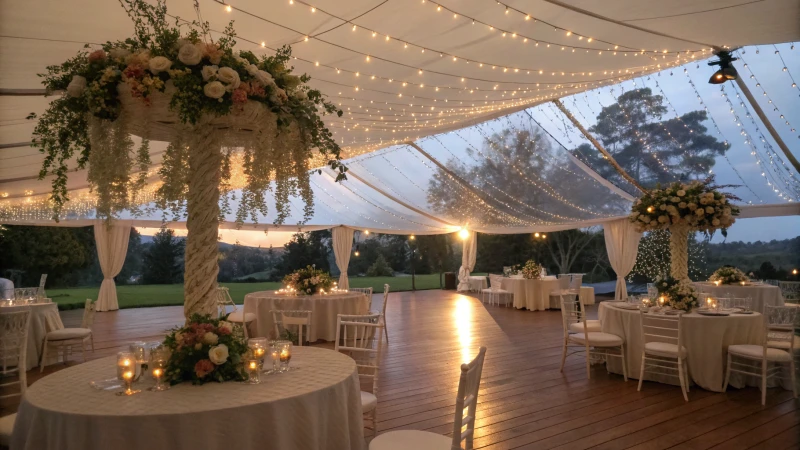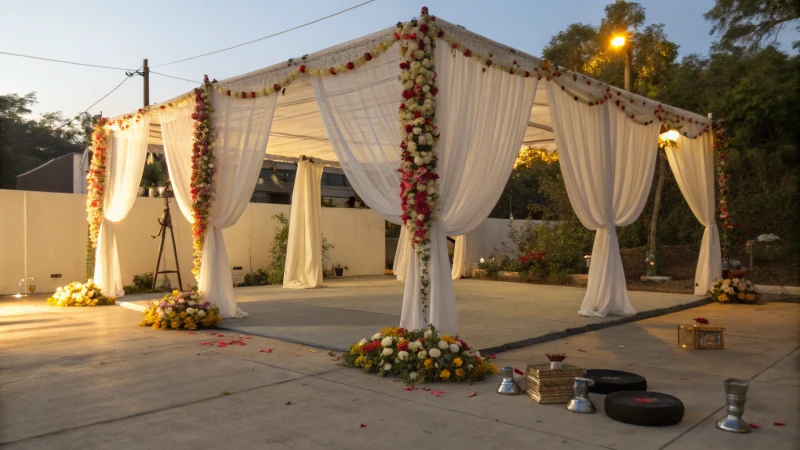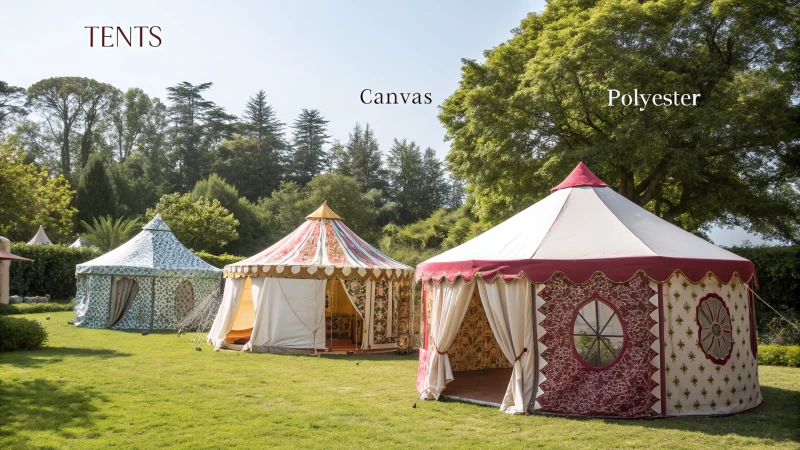
Ever wondered how tent prices are determined and what makes them fair?
Responsible tent manufacturers calculate their prices by considering tent design, material quality, dimensions, and installation complexity. Each element contributes to the final cost, ensuring transparency and value for customers.
When I first started exploring the world of tents, it was overwhelming to see how many factors go into pricing. Imagine being in my shoes: trying to figure out how the shape of a tent or the type of fabric used affects its cost. It’s like piecing together a puzzle! Understanding these details can really help in making informed choices, especially if you’re someone who values both quality and a fair price. Let’s dive into the nitty-gritty of these pricing factors so you can make the best decision for your needs.
Tent material quality affects pricing significantly.True
High-quality materials increase durability and cost, impacting price.
Installation complexity has no impact on tent pricing.False
Complex installations require more resources, raising the price.
How Does Tent Design Influence Pricing?
Ever wondered why some tents come with a hefty price tag while others seem like a steal? Let me take you behind the scenes of tent design and pricing.
Tent design plays a crucial role in pricing, mainly through the shape, size, and materials used. Complex designs demand more resources, driving up costs, while custom features like insulation or glass walls can further increase the price.

Design Complexity and Structure
Picture this: I once stood in the middle of a field, staring at an intricate pagoda tent1 we’d just set up for a wedding. It was stunning, but the setup wasn’t as simple as popping up an A-frame. Each graceful curve and peak meant extra hours and materials. That’s why simpler A-frames are often more budget-friendly—they’re straightforward, less demanding in both time and resources.
Material and Craftsmanship
Quality matters. I’ve seen how choosing robust materials like PVC-coated polyester can mean the difference between a tent standing firm against harsh weather or buckling under pressure. It’s like buying a winter coat—you get what you pay for. Add in luxury touches like insulation cotton2 or glass walls, and suddenly your tent is not just a shelter but an experience, albeit at a premium price.
For detailed comparisons, refer to the table below:
| Feature | Cost Impact | Notes |
|---|---|---|
| PVC-coated polyester | Moderate | Standard in most tents |
| Insulation Cotton | High | Ideal for temperature control |
| Glass Walls | Very High | Enhances aesthetics and weather resistance |
Customization Options
I’ve always believed that personal touches make events unforgettable. Customizing your tent—whether it’s tweaking the size, choosing the perfect shade, or adding unique features like industrial air conditioning3—can elevate your event but also increase costs. It’s akin to tailoring a suit; each modification requires precision and adds to the overall price.
Installation and Setup Costs
Setting up on uneven terrain? Been there, done that. It’s a challenge that requires specialized equipment and expertise, which means higher costs. However, working with local installation crews can sometimes offer savings over flying in a full team from afar.
Navigating these factors can feel overwhelming, but understanding them ensures you choose a tent that aligns with both your vision and your budget.
A-frame tents are more affordable than dome tents.True
A-frame tents have simpler designs, requiring less material and labor.
Glass walls do not affect the price of a tent.False
Glass walls increase tent aesthetics and weather resistance, raising costs.
How Do Material Choices Affect Tent Costs?
Have you ever wondered why some tents cost more than others? It all boils down to the materials used. Let’s explore how your choice of tent fabric can impact your wallet.
The materials you choose for a tent can significantly affect costs by influencing durability, maintenance needs, and manufacturing complexity. High-quality fabrics might increase initial expenses but offer long-term savings by reducing the frequency of replacements.

Material Types and Their Impact on Cost
When I first delved into the world of tents, I learned the hard way that the material you choose can make or break your outdoor adventure—and your budget. Polyester and nylon are the most common options. Polyester is great for those looking to save some bucks; it’s affordable, water-resistant, and provides solid UV protection. Perfect for those spontaneous weekend camping trips!
Then there’s nylon, which is my go-to for longer treks. It’s lightweight and durable, making it a favorite among backpackers like me. Though it might hit your wallet a bit harder upfront due to its durability and weather resistance, the long-term benefits are worth it. With added coatings like silicone or polyurethane, these tents can withstand quite the storm.
Advanced Materials and Customization
For those with a taste for luxury or specific needs—say, you’ve got an event in mind—advanced materials like Dyneema or canvas might be on your radar. I remember when I first considered a Dyneema tent for its incredible strength-to-weight ratio, but the cost had me doing a double-take. It’s an investment, no doubt, driven up by its complex manufacturing process4.
Canvas tents bring me back to my glamping days. Heavy? Sure, but they breathe like no other and insulate well, making them perfect for those looking to camp in style. Just remember, they demand more TLC and come with a higher price tag.
Additional Features and Their Cost Implications
Beyond choosing the right fabric, additional features can bump up the price too. I once opted for reinforced seams and waterproof zippers on a tent to brave an unpredictable mountain climate. These enhancements improved functionality but definitely added to the cost.
| Feature | Functionality Enhancement | Cost Implication |
|---|---|---|
| Reinforced Seams | Increases durability | Moderate |
| Waterproof Zippers | Enhances water resistance | High |
| Heat-Sealed Panels | Improves weatherproofing | Significant |
Understanding these options allows you to balance between affordability and the required features for specific uses.
Longevity vs. Initial Investment
Investing in top-tier materials might mean shelling out more upfront, but let me tell you, it can save you money down the line. My personal experience taught me that skimping on quality often leads to frequent repairs and replacements.
By evaluating long-term benefits5 against immediate costs, you can make smarter decisions. Consider how often you’ll use the tent and under what conditions. This approach helps in selecting a tent that aligns with both your budget and your adventure needs.
Polyester tents are cheaper than nylon tents.True
Polyester is less expensive due to its lower durability compared to nylon.
Canvas tents require less maintenance than nylon tents.False
Canvas tents need more upkeep due to their heavier, breathable material.
How Do Dimensions and Specifications Affect Pricing?
I never realized just how important dimensions and specifications were until I found myself knee-deep in a tent project that had spiraled out of control.
Dimensions and specifications are key to pricing because they dictate the materials, manufacturing complexity, and engineering required. Larger or more intricate designs usually mean higher costs due to the resources involved.

The Role of Dimensions in Pricing
When I first started working on tent projects, I learned the hard way how dimensions like height, width, and length could blow up a budget. I remember one client who wanted a massive wedding tent. It seemed straightforward until I realized the larger span required not just more materials but stronger, more expensive ones. It was a real eye-opener.
| Dimension | Impact on Pricing |
|---|---|
| Height | Affects structural integrity; taller tents need stronger supports |
| Width | Wider structures require more material, affecting both cost and stability |
| Length | Longer dimensions can reduce cost per unit area but increase total expense |
Specifications and Material Costs
Specifications are like the DNA of a product—they determine everything. I once had a customer who insisted on high-end insulated panels for a summer event tent. We were sweating over the costs—both figuratively and literally—as these premium materials hiked the price way up. Yet, seeing the guests comfortably enjoying the cool inside made it all worthwhile.
For instance, adding insulation cotton and glass walls6 increases the cost due to their higher material and installation expenses.
Complex Designs and Engineering
Intricate designs are where things get tricky—and expensive. One project involved creating a stunning pagoda structure for an exhibition. The engineering required was complex, adding layers of labor costs. It was like solving a puzzle; each piece had to fit perfectly, and every solution seemed to add to the price tag.
- Standard Designs: Usually involve straightforward assembly with minimal custom work.
- Custom Designs: Require detailed plans and custom parts, adding to the cost.
These designs also necessitate advanced manufacturing techniques7, leading to higher overall pricing.
Balancing Specifications with Budget
Striking a balance between what you want and what you can afford is crucial. I’ve had clients who initially wanted all the bells and whistles but had to scale back when the budget couldn’t stretch that far. One approach we took was opting for standard fabrics instead of custom insulated ones. It saved money without sacrificing too much on quality.
Consulting with experts can help you figure out which specifications are essential versus which ones are nice-to-have extras. This way, you ensure you’re getting the best value for your investment without overspending on extravagant features8.
Larger dimensions always increase product cost.True
Larger dimensions require more materials and engineering, raising costs.
Custom designs are cheaper than standard ones.False
Custom designs need specialized parts and labor, increasing costs.
How Do Installation Factors Impact Tent Prices?
Ever wondered why tent prices can swing from budget-friendly to sky-high? Let’s unravel the mystery behind the factors that influence these costs, from terrain challenges to weather woes.
Tent prices are shaped by installation factors like terrain type, accessibility, weather conditions, and labor costs. For instance, setting up a tent on uneven ground or remote locations can drive up the complexity and the price.

Terrain and Accessibility
Let me share a little story about a time when I was involved in setting up a tent for an outdoor event. We chose a site that seemed perfect at first glance—a stunning location with picturesque views. However, the ground was far from flat. Setting up the tent became quite an adventure! Navigating hills and rocky surfaces meant we needed extra hands and special equipment just to get everything in place safely. This added to the costs, but seeing the venue come together made it worthwhile.
Accessibility is another factor that can really influence costs. Imagine trying to transport all the tent materials to a secluded spot in the mountains or a remote beach. The logistical challenges mean increased transportation costs and perhaps even hiring additional help to manage the haul. So, when planning, it’s crucial to weigh how easily you can access your chosen location against your budget.
Weather Conditions
Weather can be an unpredictable guest at any event. If you’ve ever experienced setting up during strong winds or heavy rain, you know exactly what I’m talking about. I recall one occasion where we had to reinforce our tent with extra supports and opt for high-quality, weather-resistant materials like PVC-coated polyester9. While this ramped up our expenses, it was necessary to ensure the safety and comfort of everyone attending.
Labor Costs and Workforce
Labor costs are another key consideration. When setting up tents locally, I’ve found it more affordable because we can rely on local talent who know the terrain and work efficiently. However, some setups require specialized skills, necessitating a team from the manufacturer. This happened during one particularly complex event where we needed a bespoke design that only the manufacturer’s team could execute correctly, naturally increasing the cost.
The following table summarizes potential impacts:
| Factor | Impact on Labor Costs |
|---|---|
| Local Workforce | Lower |
| Manufacturer Team | Higher |
| Specialized Skills | Higher |
Additional Accessories
Think about when you’ve wanted to add that extra touch of luxury to an event—air conditioning for summer heat or special lighting for ambiance. Each of these additions can bump up the price significantly. They don’t just increase the initial cost but also require more time and expertise for installation.
Understanding these factors is essential for making informed decisions when budgeting for tent rentals or purchases. Exploring tent rental options10 can help you find the right fit for your needs and circumstances, ensuring your event goes off without a hitch.
Uneven terrain increases tent installation costs.True
Stabilizing tents on uneven terrain requires additional engineering solutions.
Weather conditions don't affect tent pricing.False
Extreme weather necessitates reinforcements, raising tent costs.
Conclusion
Responsible tent manufacturers determine prices based on design complexity, material quality, dimensions, and installation challenges, ensuring transparency and value for customers while balancing quality and affordability.
-
Discover how various tent shapes influence costs, helping you choose the right design for your budget. ↩
-
Learn how insulation cotton improves temperature control and comfort inside tents. ↩
-
Understand the cost implications of adding industrial air conditioning to your tent setup. ↩
-
Discover why Dyneema is pricier and how its benefits justify the investment. ↩
-
Learn how investing in quality materials can reduce long-term expenses. ↩
-
Learn about the cost implications of using premium materials in tent construction. ↩
-
Discover how intricate tent designs require advanced manufacturing techniques, increasing costs. ↩
-
Understand how selecting standard over custom features can help manage costs. ↩
-
Learn about durable fabric options that meet safety standards for various weather conditions. ↩
-
Find rental options that consider terrain, weather, and labor for optimal setup. ↩


